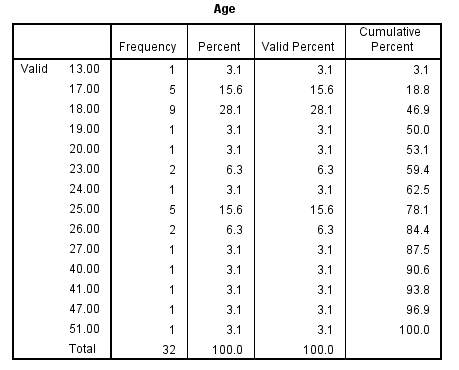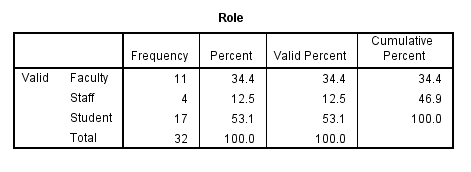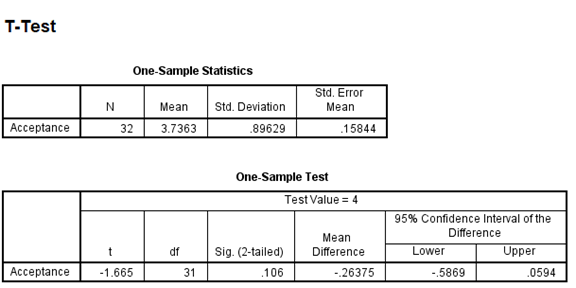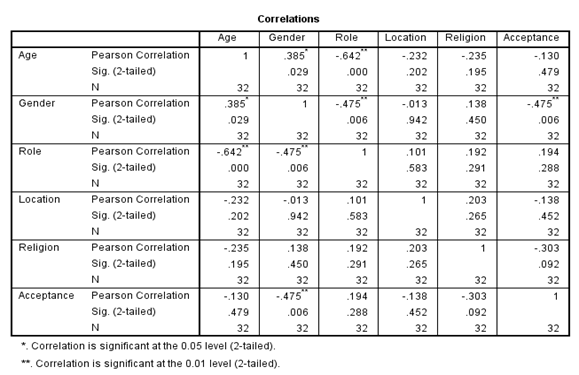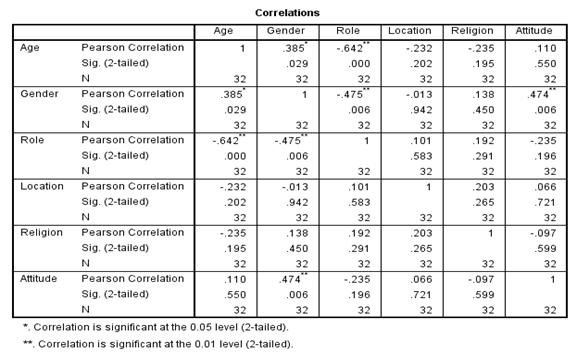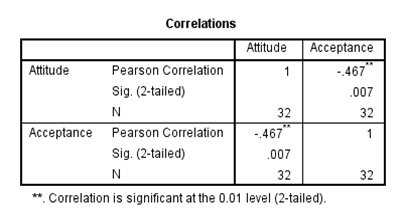Exploring Letran Bataan’s Acceptance and Attitude toward the LGBTQ+ Community
- Mr. Michael D. Atienza
- 2580-2592
- Aug 14, 2024
- Gender Studies
Exploring Letran Bataan’s Acceptance and Attitude toward the LGBTQ+ Community
Mr. Michael D. Atienza
Bataan Peninsula State University Graduate School, Philippines
DOI: https://dx.doi.org/10.47772/IJRISS.2024.803187S
Received: 29 June 2024; Revised: 10 July 2024; Accepted: 15 July 2024; Published: 14 August 2024
ABSTRACT
The title of the study is Exploring Letran Bataan’s Acceptance and Attitude toward the LGBTQ+ Community. This study used quantitative research design; the main tool for data gathering is survey questionnaires given to at least 30 respondents selected randomly stratified across students, faculties and staff of Colegio de San Juan de Letran Bataan during the Second Semester of AY 2022-2023. The frequency, percentage, mean, and standard deviation were utilized to determine the respondents’ age, gender, role, location, and religion. The Pearson Correlation Coefficient was utilized to determine acceptance, attitude, and its significant relationship to the respondent’s demographic profile. The 0.05 Level is used to test the significance of both tests. According to the results, the respondents are neutral in their attitudes toward the LGBTQ+ community and have a low level of acceptance. Respondents are neither strongly positive nor strongly negative about the LGBTQ+ community. This neutrality might indicate that they do not strongly support or oppose LGBTQ+ rights or visibility. While respondents may not be actively opposed to the LGBTQ+ community, they also do not exhibit a high degree of acceptance. This could mean they might not fully embrace LGBTQ+ individuals as equal members of society or may have reservations or discomfort about LGBTQ+ issues.
Keywords: (LGBTQ+, Homosexuality, Acceptance, Attiude, Bias, Catholic Education, Gender and Development)
INTRODUCTION
Multiple studies on Lesbian, Gay, Bisexual, Transgender and Queer+ (LGBTQ+) community have been conducted around the world since the Stonewall movement incident in 1969. Nevertheless, what exactly is its significance, and how does it differ from previous incidents that sparked gay activism during that period? Stonewall or the Stonewall Inn (now a national monument) was one of New York City’s most popular gay bars in the late 1960s (Metcalf, 2022). There were numerous raids on the bar until LGBTQ+ groups rose up against the authorities that lasted for five inconsecutive nights. The incident paved the way for the decriminalization of homosexuality and the acceptance of LGBTQ+ members in New York in 1980, and then throughout the United States (Franke-Ruta, 2013). Thus, discrimination against members of the community has decreased in various areas such as employment, education of children, promotion opportunities, reward incentives, housing, facilities, social functions, and so on. LGBTQ+ members’ activities and lifestyles have been legal in the United States since 2003, and laws have protected them since 2009 (Caroll, 2016).
However, acceptance and attitudes toward LGBTQ+ groups differ in other local communities in western and eastern countries. Although the LGBTQ+ community in the United States is more fortunate than others, there are still some Christian conservatives who oppose their way of life (Adams, 2019). Nonetheless, factors such as public openness, religion, state policy, social acceptance, and sensitivity are critical in ensuring that these groups are not ostracized or subjected to discrimination and prejudice, leaving them with doubts about their abilities and lives in society. In the Philippines, Filipinos are thought to be more accepting of LGBTQ+ members, but they still have reservations about accepting their activities and lifestyle. Thus, the LGBTQ+ community in the Philippines still suffer discrimination, prejudice and stigma due to their lack of acceptance. Furthermore, religion has a significant impact on Filipinos’ attitudes toward them. One factor stifling acceptance and a positive attitude toward the community is the country’s religion, which is predominantly Catholic. This extends to how Catholic schools perceive the LGBTQ+ community, whether they are students, teachers, or non-teaching personnel.
Despite the fact that many studies have been conducted in the western context on issues of gender discrimination and community acceptance of LGBTQ+ people, there is still a lack of studies in the local context, particularly in school settings. Therefore, the researcher wanted to examine the relationship between public acceptance and attitude toward the LGBTQ+ community from the perspective of Colegio de San Juan de Letran-Bataan, a Catholic educational institution in Abucay, Bataan Philippines. The research results will help to determine whether the school is prepared to incorporate LGBTQ+ topics into the college’s Gender and Development Program, as required by DepEd Order No. 32 Series of 2017, the Gender-Responsive Basic Education Policy. It will also contribute to more emphatic insights on the part of the school to reflect attitudes and perceptions toward the LGBTQ+ community.
Teachers, students, and even non-teaching personnel can and have experienced discrimination because of their gender identity, particularly if they are members of the LGBTQ+ community (Burns, 2011). In school, students who identify as LGBTQ+ reported feeling less secure, respected, and validated than their heterosexual and cisgender peers, resulting in lower participation and achievement (Kosciw, Gretak, Giga, Villenas, & Danischewski, 2016; Lecesne, 2012; Robinson & Espelage, 2011). Teachers who play an important role in fostering harmonious relationships in the classroom frequently ignore LGBTQ+ students or do not intervene if such anti-LGBTQ+ remarks are made in their presence (Teodoro, 2021). On the other hand, it has been observed that teachers, who have been accused of overt or offensive acts towards students, especially if they are members of the LGBTQ+ community, are rarely given a chance and are often prejudged. Worse, some of them have no recourse or protection if the accusations are proven false. Even non-teaching personnel who identify as LGBTQ+ can be ridiculed and treated as clowns, which overshadows their abilities and knowledge of their craft.
The researcher’s stay in the college has observed some of these incidents and though it has Gender and Development events, the topic for LGBTQ+ are often disregarded and never taken into consideration. One of the researcher’s students even raised the question of why the DepEd’s Gender-Responsive Policy is not evident in the college. Bullying in the classroom causes depression, but the effects are exacerbated if the victim is LGBTQ+ member. The saddest part is when the one bullied has no one to confide in especially if the educational institution’s attitude toward the community is negative and unaccepting. There has been much research on LGBTQ+ issues in public schools for more than 30 years, yet there are only five papers directly related to the subject in the Catholic education archives (Hutching, et. al, 2019).
Colegio de San Juan de Letran-Bataan is Bataan’s first Catholic tertiary school in an emerging university town and their first batch, consisting of 79 students, began classes on June 14, 2006. It is one of the three branches of Colegio de San Juan de Letran, the two being in Calamba, Laguna, and the other in Manaoag, Pangasinan. A qualitative study on parents’ attitudes toward their homosexual children at Colegio De San Juan De Letran Calamba (Delos Santos et al, 2011) uncovered a favorable response but it does not directly involve the institution. Letran-Bataan as a Catholic educational institution and as part of Catholic organization is governed by the rules of the Church and at the same time, must follow the policy of the Department of Education on Gender-Responsive Basic Education Policy (Consebido, 2022). Thus, the researcher would like to bridge the gap on the catholic educational institution’s attitude and acceptance toward the LGBTQ+ community, a topic both relevant and timely. This will determine whether the institution is prepared to implement the policy or not.
The researcher would like to determine the respondent’s attitude and acceptance toward the LGBT community. Specifically, the research intends to:
- describe the demographic profile of the respondents in terms of
- age;
- gender preference;
- role in school;
- location;
- religion;
- describe respondent’s acceptance of LGBT community in terms of:
- psychological inflexibility;
- psychological flexibility;
- describe respondent’s attitude towards LGBT community
- determine whether there is a significant difference on acceptance level of the respondents when they are grouped according to demographic profile variables
- determine whether there is a significant difference on attitude of the respondents when they are grouped according to demographic profile variables
- determine the significant correlation of acceptance and attitudes among the respondents towards LGBTQ+ community
- propose the inclusion of LGBTQ+ topics in Gender and Development event for the respondents based from the results of the study.
The researcher assumes that there will be a low level of acceptance towards the LGBTQ+ community in Colegio de San Juan de Letran-Bataan. Thus, this research will seek to prove the following hypotheses:
Hypothesis 1:
H0: There is a low level of respondent’s acceptance toward LGBTQ+ community.
H1: There is a high level of respondent’s acceptance toward LGBTQ+ community.
Hypothesis 2:
H0: There is no significant correlation of acceptance and attitudes among the respondents towards LGBTQ+ community.
H1: There is a significant correlation of acceptance and attitudes among the respondents towards LGBTQ+ community.
This study aims to examine two variables: community acceptance and attitude of Colegio de San Juan de Letran-Bataan toward LGBTQ+ members. Colegio de San Juan de Letran-Bataan is a Catholic educational institution situated in Dominican Avenue, Gabon, Abucay Bataan. The data collection will take place during the second semester of the school year 2023-2024 and a stratified random sample of teachers, non-teaching personnel, and students (high school and college) from the college served as respondents of the study. Due to the sensitive nature of the research topic, elementary students were not considered.
As with the majority of studies, the design of the current study is subject to limitations. Literatures related to LGBTQ+ in the Philippines is limited especially in Catholic educational institution so most of the references are from public educational institution and foreign sources. Another limitation is that the researcher is not inclined in Psychology and thus cannot accurately interpret the data’s results, particularly the respondent’s attitude toward the LGBTQ+ community. Due to time constraints and the researcher’s availability, the study’s results only represent the Colegio de San Juan de Letran-Bataan community and not the entire Bataan population.
The lack of studies on the LGBTQ+ community in which experiences and attitudes toward them are not documented sends a clear message of exclusion. This is an issue of social justice and more study should be conducted to better understand the experiences and attitudes toward the community. Researchers are motivated to study the needs of the LGBTQ+ community due to health disparities, legal and policy challenges, social stigma, and the impact of minority stress. Current phenomena include advancements in rights, increased visibility, persistent health disparities, challenges in youth development, and global variations in LGBTQ+ rights and acceptance. Understanding these factors is crucial for addressing inequalities, promoting inclusivity, and improving the well-being of LGBTQ+ individuals globally. While such study is extensive in public schools, this is an especially important social justice issue for Catholic schools. The significance of this study is not only to determine whether the institution involved is prepared for the DepEd’s Gender-Responsive Basic Education Policy, but also to better understand their challenges and opportunities in terms of the rights and needs of the LGBTQ+ community.
METHODOLOGY
The study used a descriptive-relational quantitative design and used stratified random sampling from a total of 32 junior high school students, senior high school students, college students, and teaching and non-teaching staff of Colegio de San Juan de Letran Bataan in Abucay, Bataan, Philippines. During adolescence, students begin to explore their gender identity. Therefore, the study includes junior high school students to raise awareness that LGBTQ+ identities are valid and deserving of respect. The college was chosen because it is the province’s first Catholic educational institution and a good predictor of acceptance and attitude toward the LGBTQ+ community due to their strict enforcement of morality and church teachings.
The quantitative approach made use of a descriptive-relational study with a cross-sectional survey design to describe the level of attitudes toward homosexuality. The survey was conducted through Google forms and prior to the respondents answering the questions, consent and briefing were done.
The researcher adapts the Acceptance and Action Questionnaire – Stigma (AAQ-S) questionnaire developed by Levin, Luoma, Lillis, Hayes, & Vilardaga and Homosexuality Attitude Scale by Kite, M.E., & Deaux, K. The collected data were handled with the utmost confidentiality. The questionnaire consists of three parts: personal data and attitude/acceptance toward homosexuality measuring three attitudinal factors: psychological flexibility, psychological inflexibility and attitude. For personal data includes questions on age, gender, role in school, location, and religiosity.
The data were used as predictors for homosexuality attitudes in the analysis. Each sub-scale for acceptance questions utilizes a 7-point Likert scale (7 – strongly agree, 4 – moderate, and 1 – strongly disagree), whereas each sub-scale for attitude questions uses a 5-point Likert scale (5 – strongly agree, 3 – moderate, and 1 – strongly disagree). The Pearson Correlation Coefficient (r) was applied to quantitatively assess the correlation between the variables. The respondents’ psychological well-being were not assessed during the course of the study.
RESULTS AND DISCUSSIONS
This section contains detailed presentation and discussion of data analysis and the results of this study. The findings are presented under the following major headings:
- demographic profiles of respondents,
- respondents’ acceptance and attitude level towards LGBTQ+ community,
- significant difference on acceptance level of the respondents according to their demographic profile,
- significant difference on attitude of the respondents according to their demographic profile,
- and the significant correlation of acceptance and attitudes among the respondents towards LGBTQ+ community.
1. Demographic Profile of Respondents
Respondents of ages 13 to 51 were represented, with slightly larger numbers in the 18 years old bracket accounting to 28.1%, followed by 17 and 25 years old accounting both to 15.6%. The largest number of respondents are females accounting to 46.9%, then males to 37.5% and the LGBTQ+ to 15.6%. Students accounted to 53.1%, followed by the faculty, which is 34.4% and the staff accounting to 12.5%. There is a high number of respondents from Bataan’s First District (Abucay, Dinalupihan, Hermosa, Morong, Orani and Samal) which is 50%, then the Second District (Limay, Orion and Pilar) accounting to 40.6% and the Third District (Bagac, Dinalupihan, Mariveles and Morong) accounting to 9.4%. Majority of the respondents are Roman Catholic accounting to 81.3%, followed by other religion, which is 15.6% and Aglipayan accounting to 3.1%.
2. Respondents’ Acceptance and Attitude Level Towards LGBTQ+ Community
Based on the cumulative mean scores of respondents, the acceptance level of Colegio de San Juan de Letran Bataan community towards the LGBTQ+ community, which is 3.74 from a 5-point Likert Scale is moderate whereas, they have a neutral attitude towards them evident from the 4.22 mean score result from a 7-point Likert Scale.
To determine whether Colegio de San Juan de Letran Bataan accepts or rejects the LGBTQ+ community, a T-Test was used to test the means. The results showed that the Sig (2-Tailed) is .106, which is higher than the accepted value of .05. Therefore, the null hypothesis is accepted, indicating that Colegio de San Juan de Letran Bataan has a low level of acceptance towards the LGBTQ+ community.
3. Significant Difference on Acceptance Level of the Respondents according to their Demographic Profile
The study conducted a Pearson’s correlation analysis to examine whether there is a significant difference in the acceptance level of the respondents towards the LGBTQ+ community based on their demographic profile. Pearson’s correlation coefficient is a statistical measure that assesses the strength and direction of the relationship between two variables.
The results of the analysis showed that there is a negative correlation between age and LGBTQ+ acceptance. This means that as the age of the respondents increases, their acceptance level towards the LGBTQ+ community decreases. This finding is consistent with previous research that has shown that younger people are more accepting of the LGBTQ+ community than older people.
Furthermore, the study found that gender and LGBTQ+ acceptance also had a negative correlation, indicating that female respondents have lower acceptance levels towards the LGBTQ+ community. This finding is consistent with other studies that have shown that women tend to be more conservative in their attitudes towards the LGBTQ+ community than men.
The analysis also revealed that there was a weak relationship between school role and LGBTQ+ acceptance level. The weak relationship between school role and LGBTQ+ acceptance level suggests that being a student, faculty member, or staff member does not significantly influence one’s acceptance of the LGBTQ+ community. This indicates that attitudes toward the LGBTQ+ community are shaped by broader societal influences and personal beliefs rather than institutional roles alone. Effective education and fostering inclusive environments within schools can help mitigate role-based differences in acceptance levels.
The location of the respondents also had a negative correlation with acceptance level towards the LGBTQ+ community. Specifically, those who lived in the third district (Morong, Bagac, Mariveles and Dinalupihan) had the lowest level of acceptance towards the LGBTQ+ community. This finding highlights the need for more targeted education and outreach efforts in this particular district to promote greater acceptance and understanding of the LGBTQ+ community.
The analysis showed that religion and LGBTQ+ acceptance also had a negative correlation. Specifically, Catholics had a higher level of acceptance towards the LGBTQ+ community compared to other religions like Aglipayans or Muslims. This finding highlights the importance of understanding how religious beliefs can shape attitudes towards the LGBTQ+ community and the need for more interfaith dialogue and understanding.
The statistical results presented in the next section use the p-value (sig 2-tailed value) to determine whether there is a statistically significant correlation between each of the demographic variables (age, gender, school role, location, and religion) and acceptance level towards the LGBTQ+ community.
The results indicate that there is no statistically significant correlation between age, role, location, and religion with LGBTQ+ acceptance, as the p-values for these variables are all greater than .05 (specifically .479, .288, .452, and .092, respectively). This suggests that these demographic variables may not be strong predictors of attitudes towards the LGBTQ+ community, or that the sample size may not be large enough to detect a significant relationship.
On the other hand, there is a statistically significant correlation between gender and LGBTQ+ acceptance, as the p-value for this variable is less than .05 (specifically .006). This suggests that gender may be an important predictor of attitudes towards the LGBTQ+ community, with female respondents showing lower acceptance levels compared to male respondents.
In summary, the results suggest that gender may be a significant predictor of acceptance level towards the LGBTQ+ community, but age, school role, location, and religion may not be strong predictors. However, it is important to note that these results are based on Colegio de San Juan de Letran Bataan and may not necessarily generalize to other populations or contexts.
4. Significant Difference on Attitude Level of the Respondents according to their Demographic Profile
This section provides a summary of the findings on the significant difference in attitude level towards the LGBTQ+ community among the respondents based on their demographic profile. Pearson’s correlation was used to assess the strength and direction of the relationship between each demographic variable and attitude level.
The results indicate that gender is a significant predictor of attitude towards the LGBTQ+ community, as there is a moderate relationship between these variables. The moderate relationship found suggests that certain genders may be more accepting or less accepting on average compared to others, aligning with previous research that has similarly identified gender as a crucial factor influencing attitudes towards LGBTQ+ individuals. Thus, the results imply that gender plays a role in shaping attitudes towards the LGBTQ+ community, highlighting the need for further investigation into the specific dynamics and reasons behind these attitudes.
The negative correlation between role and attitude suggests that students may have more biased attitudes towards the LGBTQ+ community compared to faculty or staff members.
The weak correlation between age and attitude towards LGBTQ+ may suggest that age may not be a strong predictor of attitudes towards sexual and gender minorities. However, previous research has reported mixed findings on the relationship between age and attitudes towards LGBTQ+ individuals, with some studies finding a negative correlation while others finding no significant relationship.
The negative correlation between religion and attitude towards the LGBTQ+ community suggests that individuals with certain religious affiliations, such as Aglipayans and Muslims, may have more biased attitudes towards sexual and gender minorities compared to Catholics. This finding is consistent with previous research that has found a negative correlation between religiosity and attitudes towards LGBTQ+ individuals.
The p-value (sig 2-tailed value) presents the results of the statistical analysis on the relationship between demographic variables and attitude towards the LGBTQ+ community.
The results indicate that there is a statistically significant correlation between gender and attitude towards the LGBTQ+ community, with a p-value of .006, which is lower than the threshold of .05. This suggests that gender is a significant predictor of attitudes towards sexual and gender minorities. On the other hand, the p-values for age, role, location, and religion are all greater than .05, indicating that there is no statistically significant correlation between these variables and attitude towards the LGBTQ+ community.
It is important to note that these results are based on Colegio de San Juan De Letran Bataan and may not generalize to other populations or contexts. Nonetheless, the findings suggest that gender may play an important role in shaping attitudes towards sexual and gender minorities. Further research is needed to better understand the factors that contribute to the development of attitudes towards the LGBTQ+ community and how these attitudes can be changed through education and other interventions.
5. Significant Correlation of Acceptance and Attitudes among the Respondents towards LGBTQ+ community
This section describes the findings of the study that investigated the relationship between acceptance and attitudes towards the LGBTQ+ community among respondents using Pearson’s correlation coefficient. The analysis revealed a negative correlation coefficient of -.467, indicating that as attitudes towards the LGBTQ+ community increase, the acceptance level decreases. This also answers the second hypothesis that there is a significant correlation between acceptance and attitudes among the respondents towards the LGBTQ+ community.
Furthermore, the study found a statistically significant correlation between acceptance and attitudes towards the LGBTQ+ community, with a p-value of .007, which is less than the standard alpha level of .05. This implies that there is a strong relationship between acceptance and attitudes towards the LGBTQ+ community among the respondents.
The study’s results suggest that attitudes and acceptance towards the LGBTQ+ community are closely related and that a negative attitude towards the community may lead to lower acceptance levels. The findings may have significant implications for future research, policy development, and interventions aimed at promoting greater acceptance and positive attitudes towards the LGBTQ+ community.
CONCLUSION
Based on the analysis of the data, it can be concluded that there are significant differences in the levels of acceptance and attitudes towards the LGBTQ+ community among Colegio de San Juan de Letran-Bataan respondents based on their demographic profiles such as gender, location, and religion. Specifically, there is a statistically significant correlation between gender and attitude towards the LGBTQ+ community, where female respondents have a more accepting attitude compared to male respondents. Furthermore, the results also indicate that as the age, gender, location, and religion of the respondents increase, their level of acceptance and attitudes towards the LGBTQ+ community tend to decrease.
Moreover, there is a statistically significant negative correlation between the acceptance and attitudes of the respondents towards the LGBTQ+ community. This means that as the level of attitude towards the LGBTQ+ community becomes more biased, the level of acceptance decreases.
These findings suggest that there is a need for further research and interventions to promote a more inclusive and accepting attitude towards the LGBTQ+ community, particularly among male respondents, those in certain locations, and with specific religious affiliations. It is essential to create a more diverse and accepting environment, especially in educational settings, to promote a more positive and supportive atmosphere for individuals who identify as LGBTQ+. As a result, the college’s Gender and Development program should thoroughly research and incorporate issues and programs on LGBTQ+ to inculcate inclusivity and lessen biases and discrimination towards the aforementioned community.
REFERENCES
- Metcalf, Meg (2022). Women’s, Gender, & LGBTQ+ Studies Librarian, Researcher and Reference Services Division, Library of Congress: https://guides.loc.gov/lgbtq-studies/stonewall-era
- Franke-Ruta, Garance (2013). An Amazing 1969 Account of the Stonewall Uprising, The Atlantic: https://www.theatlantic.com/politics/archive/2013/01/an-amazing-1969-account-of-the-stonewall-uprising/272467/
- Caroll, A. (2016). State Sponsored Homophobia 2016: A world survey of sexual orientation laws: criminalisation, protection and recognition International Lesbian, Gay, Bisexual, Trans and Intersex Association (Geneva; ILGA, May 2016)
- Adams, C. (2019). Indiana Catholic high school fires gay teacher over same-sex marriage in ‘agonizing decision.’ Retrieved from https://people.com/human interest/indianacatholic-high-school-fires-gay-teacher/
- Miller, S. J., Burns, L., & Johnson, T. S. (2013). Generation BULLIED 2.0: Prevention and intervention strategies for our most vulnerable students. New York, NY: Peter Lang
- Kosciw, J. G., Palmer, N. A., Kull, R. M., & Greytak, E. A. (2013). The effect of negative school climate on academic outcomes for LGBT youth and role of in-school supports. Journal of School Violence, 12(1), 45-63. doi:10.1080/15388220.2012.732546
- Teodoro, Gregorio T. (2021). Teachers’ Acceptance of Lesbian, Gay, Bisexual, Transgender, and Queer (LGBTQ) Students. IJTET Chicago | Volume 1 Issue 2 July 2021, 66-73.
- Delos Santos, E. G., Llarena, C. A. & Opiz, L. S. (2011). Parents’ Attitude Toward their Homosexual Children in Colegio De San Juan De Letran Calamba. Ani: Letran Calamba Research Report, 1(1). Retrieved from http://www.ejournals.ph/form/cite.php?id=71
- Huchting, K., & Fisher, E. (2019). Introduction to the Special Issue: The Challenges and Opportunities ofIncluding the LGBTQ Community in Catholic Education. Journal of Catholic Education, 22 (3). http://dx.doi.org/10.15365/joce.2203012019
- Consebido, Katrina Gracia (2022). DepEd reiterates policy on gender-responsive basic education. https://ptvnews.ph/deped-reiterates-policy-on-gender-responsive-basic-education/
- Schoch, S., Nikitin, J., & Freund, A. M. (2015). Why don’t you like me? The role of social approach and avoidance motives in attributions following social acceptance and rejection. Motivation and Emotion, 39 (5), 680–692.
- Whitehead, A.L. (2013). Religious Organizations and Homosexuality: The Acceptance of Gays and Lesbians in American Congregations. Rev Relig Res 55, 297–317. https://doi.org/10.1007/s13644-012-0066-1
- Cadge, Wendy, Jennifer Girouard, Laura R. Olson, and Madison Lylerohr. (2012). Uncertainty in clergy’s perspectives on homosexuality: A research note. Review of Religious Research. doi:10.1007/s13644-012-0058-1.
- Thomas, Jeremy N., and Daniel V.A. Olson. (2012). Beyond the culture war: Managing sexual relationships inside a congregation of gay Evangelicals. Review of Religious Research. doi:10.1007/s13644-012-0051-8.
- Tatiene C. Souza, Francisco Cribari-Neto,Intelligence (2015). Religiosity and homosexuality non-acceptance: Empirical evidence, Intelligence,Volume 52, 2015, Pages 63-70, ISSN 0160-2896, https://doi.org/10.1016/j.intell.2015.07.003. (https://www.sciencedirect.com/science/article/pii/S016028961500097
- Miller, Kathleen K., Watson, Ryan J., and Eisenberg, Marla E. (2020). The Intersection of Family Acceptance and Religion on the Mental Health of LGBTQ Youth. Annals of LGBTQ Public and Population Health, Volume 1, Number 1, 2020. DOI: 10.1891/LGBTQ.2019-0005
- Zou C, Andersen JP (2015). Comparing the rates of early childhood victimization across sexual orientations: heterosexual, lesbian, gay, bisexual, and mostly heterosexual. PLOS ONE.;10(10):1-15. https://doi.org/10.1371/journal.pone.0139198
- Luk JW, Gilman SE, Haynie DL, Simons-Morton BG (2018). Sexual orientation and depressive symptoms in adolescents. Pediatrics. 141(5):e20173309. https://doi.org/10.1542/peds.2017-3309
- Pearson J, Wilkinson L (2013). Family relationships and adolescent well-being: are families equally protective for same-sex attracted youth? J Youth Adolesc. 2013;42:376-393.https://doi.org/10.1007/s10964-012-9865-5
- Rosario M, Reisner SL, Corliss HL (2014). Disparities in depressive distress by sexual orientation in emerging adults: the roles of attachment and stress paradigms. Arc Sex Behav. 43(5):901-916. https://doi.org/10.1016/j.pmrj.2014.02.014.Lumbar
- Gower AL, Rider GN, Brown C, et al (2018). Supporting transgender and gender diverse youth: protection against emotional distress and substance use. Am J Prev Med.55(6):787-794. https://doi.org/10.1016/j.amepre.2018.06.030 LK
- McConnell EA, Birkett M, Mustanski B.(2016). Families matter: social support and mental health trajectories among lesbian, gay, bisexual, and transgender youth. J Adolesc Health. 59(6):674-680. https://doi.org/10.1016/j.jadohealth.2016.07.026
- Olson KR, Durwood L, DeMeules M, McLaughlin KA (2016). Mental health of transgender children who are supported in their identities. Pediatrics. 137(3):e20153223. https://doi.org/10.1542/peds.2015-3223
- Snapp SD, Watson RJ, Russell ST, Diaz RM, Ryan C. (2015). Social support networks for LGBT young adults: low cost strategies for positive adjustment. Fam Relat. 64(3):420-430. https://doi.org/10.1111/fare.12124
- Quinto, R. (2019). Book Review: Homophobia in the Hallways: Heterosexism and Transphobia in Canadian Catholic Schools. Journal of Catholic Education, 22 (3). http://dx.doi.org/10.15365/joce.2203052019
- Wang, Y., Hu, Z., Peng, K. et al (2020). Mapping out a spectrum of the Chinese public’s discrimination toward the LGBT community: results from a national survey. BMC Public Health 20, 669. https://doi.org/10.1186/s12889-020-08834-y
- Fabillar, Care Nicole Elizabeth & Fellizar, Francis Mark Dioscoro R. (2019). Social Acceptability of the Lesbian, Gay, Bisexual, Transgender, and Queer (LGBTQ) Community among Local Government Legislators in the City of San Fernando, Pampanga. Journal of Human Ecology, Issue No. 8, January to December 2019.
- Espiritu, Edlyn Joy P., Baay, Ezequiel P. et. al (2022). Raise Your Flags: Exploring the Coming Out Process of Identified LGBTQ in Davao Del Norte, Philippines. ICESSER 5th International Congress, ISBN: 978-605-73381-4-3
- De Leon, John Angelo & Jintalan, Joseph (2018). Accepted or Not: Homosexuality, Media, and the Culture of Silence in the Philippine Society. Jurnal Komunikasi Malaysian Journal of Communication Jilid 34(3) 2018: 408-425. E-ISSN: 2289-152 https://doi.org/10.17576/JKMJC-2018-3403-25
- Human Rights Watch. (2017). “Just let us be” discrimination against LGBT students in the Philippines. Retrieved from https://www.hrw.org/report/2017/06/21/just-let-usbe/discrimination-against-lgbt-students-philippines
- Joaquin, A. (2014). Carrying the cross: Being gay, catholic, and Filipino. Sociology and Anthropology Student Union Undergraduate Journal, 1(1), 17–28.
- Manalastas, E. J., Torre, B., Manalastas, E. J., & Torre, B. A. (2016). LGBT psychology in the Philippines. Psychology of Sexuality Review, 7(1), 60–72.
- Prieler, M., & Centeno, D. (2013). Gender representation in Philippine television advertisements. Sex Roles, 69(5–6), 276–288. doi: https://doi.org/10.1007/s11199-013-0301-4
- Uy, J. (2015). Filipino catholic population expanding, say church officials. Philippine Daily Inquirer. Retrieved from http://newsinfo.inquirer.net/463377/filipino-catholicpopulation-expanding-say-church-officials
- Poushter, Jacob & Kent, Nicholas O. (2020). The Global Divide on Homosexuality Persists. Pew Research Center. 202.419.4372. www.pewresearch.org
- APA Dictionary of Psychology Online. (2020). American Psychological Association. Retrieved from https://dictionary.apa.org/attitude
- Competente, R. J. T. (2021). Attitudes towards Homosexuality of Teachers and Administrators in Naga City, Camarines Sur, Philippines. Puissant, 2, 221-235.
- Smith, T. W, Son, J., & Kim, J. (2014). Public Attitudes toward Homosexuality and Gay Rights across Time and Countries. UCLA: The Williams Institute. Retrieved from https://escholarship.org/uc/item/4p93w90c
- Park, Alison & Rebecca Rhead (2013). Personal Relationship: Changing Attitudes towards Sex, Marriage, and Parenthood. InBritish Social Attitudes, ed. Alison Park et al. Lon-don NatCen Social Research.
- Smith, Tom W. & Jaseok Son (2013). Trends in Attitudes towards Sexual Morality. Chicago,IL: NORC.
- Encarnacion, Omar G. (2011). “Latin America’s Gay Rights Revolution.” 22:104–118.
- Itaborahy, Lucas Paoli & Jingshu Zhu (2013). State-sponsored Homophobia: A World Surveyof Laws: Criminalisation, Protection, and Recognition of Same-sex Love. 8th ed. City:International Lesbian, Gay, Bisexual, Trans, and Intersex Association.
- Reyes, Marc Eric S., Ballesteros, Kristine Cate A., Bandol, Patricia Ann A., Jimenez, Kaye Angeline H., Malangen, Sean Derick R. (2019). Religiosity, Gender Role Beliefs, and Attitudes Toward Lesbians and Gays in the Philippines. North American Journal of Psychology, 2019, Vol. 21, No. 3, 559-572. NAJP
- UNDP & USAID (2014). Being LGBT in Asia: The Philippines Country Report. Bangkok.
- Psychological Association of the Philippines. (2011).
- Ajzen, Icek (1991). “The theory of planned behavior”. Organizational Behavior and Human Decision Processes. 50 (2): 179–211. doi:10.1016/0749-5978(91)90020-T
- Sawai, P., Mahyuddin, K., & Hisham, T. (2020). Exploring college students’ acceptance and attitude toward the LGBT community. International Journal of Psychosocial Rehabilitation, 24(08) ISSN: 1475-7192: https://www.researchgate.net/publication/349042206
ABOUT AUTHOR
A Research Paper presented by
Mr. Michael D. Atienza, MAEd Major in Social Studies
In partial fulfillment for the course, Statistical Method Applied to Education (EME002)
Bataan Peninsula State University Graduate School
Submitted to
Thelma D. Manansala Ed. D., Professor

